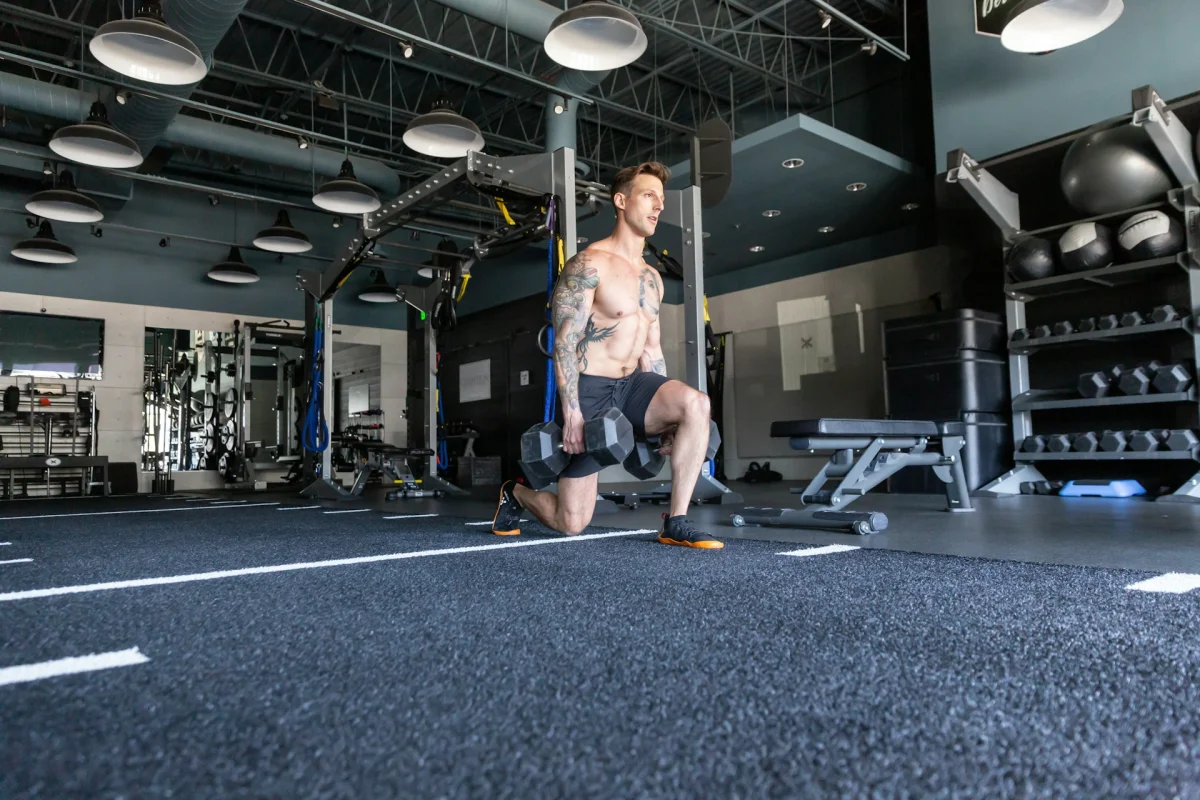 Friday, October 17, 2025
Friday, October 17, 2025How many repetitions are optimal for muscle growth? – Scientifically explained
Building muscle is not a matter of chance but the result of a targeted training stimulus. Yet the most common question remains: How many repetitions ("reps") should you do to optimize muscle growth? In this blog, you will learn what modern sports science says about this, how you can adjust your repetition count individually, and why "more weight = more muscles" is not always the rule.

The Foundation: What Happens During Muscle Growth?
Muscle growth (hypertrophy) occurs when muscle fibers are stimulated through mechanical tension, metabolic stress, and microscopic muscle damage. Training causes the body to repair and strengthen the muscle fibers, making them thicker, stronger, and more resilient.
However, what is crucial is how strong and how long this stimulus lasts. This is precisely where the number of repetitions comes into play.
The Three Training Zones by Repetitions
| Goal | Repetitions per Set | Intensity (% of 1RM*) | Effect |
|---|---|---|---|
| Maximal Strength | 1–5 | 85–100 % | Strong increase in strength, low hypertrophy |
| Muscle Growth (Hypertrophy) | 6–12 | 65–85 % | Maximum muscle mass, moderate strength increase |
| Endurance | 13–20+ | 40–65 % | Low hypertrophy, high fatigue resistance |
*1RM = One Repetition Maximum, meaning the weight you can lift once.
This classification is based on numerous studies, including those by Brad Schoenfeld (2010, 2017), a leading muscle growth researcher. His analyses show that 6–12 repetitions with moderate load result in the greatest increase in muscle mass.

Why 6–12 Reps Are Optimal
- Mechanical Tension:
With 6–12 repetitions, you can move a weight heavy enough to maximally activate muscle fibers—especially the fast-twitch type II fibers that grow the most.
- Metabolic Stress:
This number of repetitions leads to an intense "pump" feeling. In this zone, lactate accumulates, promoting the release of growth factors (like IGF-1).
- Balance Between Weight and Volume:
Lower repetitions with very high weight place heavy stress on the joints, while very high repetitions produce less muscle tension. The middle range offers the best compromise.

Scientifically Proven: A Review of the Studies
- Schoenfeld et al. (2017) found that both high (8–12 reps) and low (2–6 reps) repetition ranges can build muscles—but the middle range provides the best mix of muscle and strength gains.
- Krieger (2010, Journal of Strength and Conditioning Research) showed that multiple sets (3–4 per exercise) produce significantly more muscle growth than just one set.
- Morton et al. (2016, Applied Physiology, Nutrition, and Metabolism) demonstrated that even lighter weights (up to 30% of 1RM) can lead to similar muscle growth—if trained to muscle failure.

Muscle Failure: The Crucial Factor
Regardless of the repetition count, it matters how close you get to muscle failure. Stopping too early results in a minimal growth stimulus.
👉 Optimal: Train at 6–12 reps to 1–2 repetitions before muscle failure.
This ensures high recruitment of all muscle fibers and prevents overtraining.
Example: Muscle Growth Plan (Medium Volume)
| Exercise | Sets | Repetitions | Rest |
|---|---|---|---|
| Bench Press | 4 | 8–10 | 90 Sec. |
| Pull-Ups | 4 | 6–10 | 90 Sec. |
| Squats | 4 | 8–12 | 120 Sec. |
| Overhead Press | 3 | 10–12 | 60 Sec. |
| Bicep Curls | 3 | 10–12 | 45–60 Sec. |

Individual Differences
Not everyone responds the same. Studies show that genetic differences, muscle fiber types, and training experience can influence the optimal repetition count.
- Beginners: 10–12 Reps → Focus on technique and muscle feel.
- Advanced: 6–10 Reps → Higher intensity for maximum hypertrophy.
- Advanced with Periodization: Switch between 6–8 and 10–12 reps for consistent progress.

Conclusion
For maximum muscle growth, the principles are:
- 6–12 repetitions,
- multiple sets per muscle group,
- moderate to high intensity (65–85% of 1RM),
- training close to muscle failure.
Thus, you achieve the perfect balance between strength, volume, and recovery. Simply put:
"Train heavy enough to challenge your muscles—but smart enough to let them grow."


